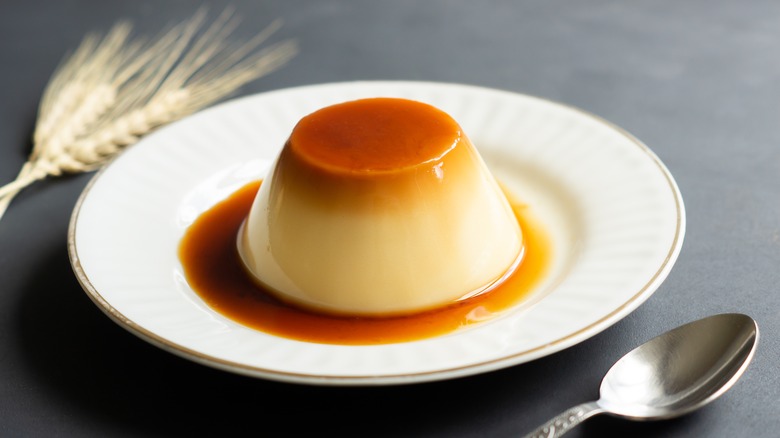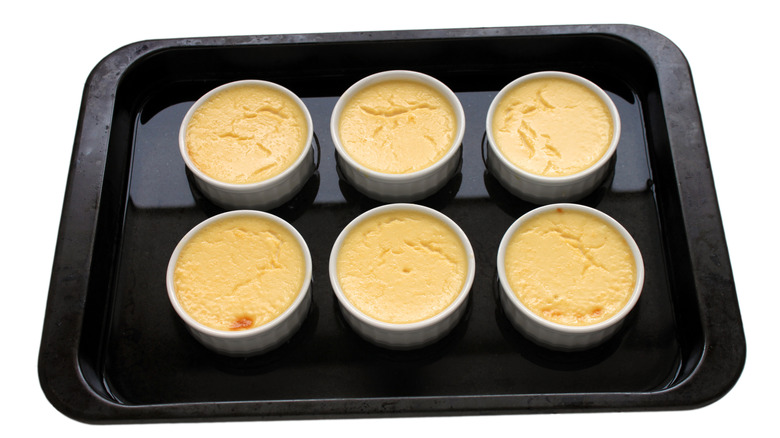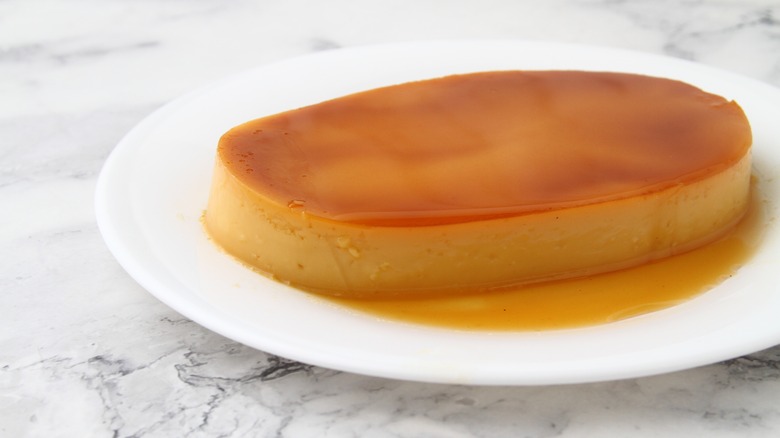What Kind Of Dessert Is Flan?
In the Spanish movie "Volver," Penelope Cruz reveals her status as a new chef and cooks a range of dishes, including a stew called pisto manchego and flan for dessert. Many of us would have encountered this jiggly, delicate dessert with its '90s charm in diners, Tex-Mex restaurants, or the frozen dessert aisles in supermarkets. The fact that it was also featured as a homey food in a Spanish movie shows that flan is a globalized dish with local variations.
But what exactly is it? Is it a type of custard or pudding? Despite its fancy-sounding name, flan is made with just a few pantry ingredients. Specifically, it combines eggs, milk (whole, condensed, or evaporated), sugar, and sometimes vanilla to create a smooth and creamy mixture which is then baked or steamed and topped with caramel syrup.
Because of this consistency, it is more custard than pudding. While both desserts share similarities in their creamy texture and use of eggs and milk, they differ in the use of a binding agent.
The use of eggs makes flan more custard than pudding
As a general rule, custard refers to a dessert made by combining eggs, milk or cream, and sugar, which are then cooked to create a thickened, smooth, and creamy consistency. The eggs in custard help bind the ingredients together and give it a silky, gelatinous texture.
The use of eggs, while essential, also makes the custard (or flan) making process quite delicate because the high heat can cause the eggs to harden or scramble when they should be silky. MasterClass suggests making it "in a double boiler over gentle heat or in the oven using a water bath." The culinary term for a water bath is bain-marie, which means filling a baking pan with hot water and using that indirect heat to cook the custard dish in ramekins.
On the other hand, pudding generally refers to a dessert thickened with starch, such as cornstarch or flour, rather than eggs. This starchy thickening agent gives pudding a slightly different texture compared to custard. While custard holds its shape, pudding is less malleable. Since flan does not contain flour, we can safely say it falls in the custard category.
Flan comes in all shapes and flavors
Flan has global appeal because it is simple enough to make with ingredients that people are likely to already have at home, just like pancakes. The French version — crème caramel — is probably the most popular.
But flan is much-loved in the Spanish-speaking world too. It is known as flan de huevo in Spain, and in countries that Spain colonized, they introduced this dessert, which eventually became a local favorite. For example, in Mexico, it is called flan napolitano; in the Philippines, it lives on as leche flan. Leche differs slightly from the rest, using evaporated or condensed milk rather than whole milk.
Despite all the variations, a flan's defining feature is the liquid, caramelized coating (not to be confused with the sugar crust on top of a crème brûlée). This sweet and slightly bitter layer complements the custard and adds depth to the flavor. Consider these details the next time you see flan on the menu.


